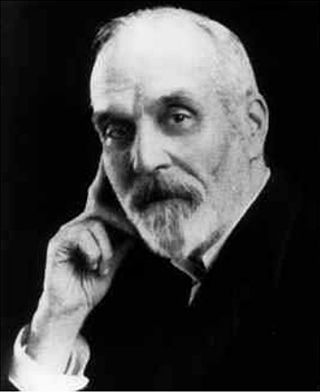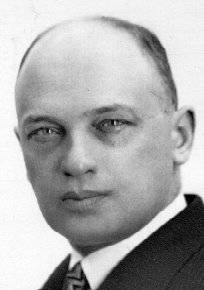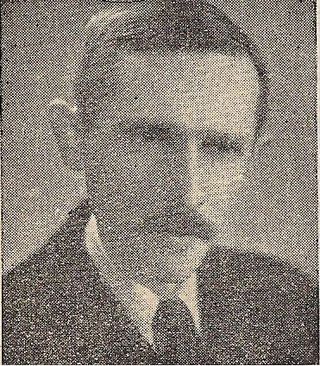Related Research Articles
Fairy chess is the area of chess composition in which there are "some" changes to the rules of chess. The term was introduced by Henry Tate in 1914. Thomas R. Dawson (1889–1951), the "father of fairy chess", invented many fairy pieces and new conditions. He was also problem editor of Fairy Chess Review (1930–1951).
An Albino is a type of chess problem, "in which, at some point in the solution, a white Pawn on its starting square makes each of its four possible moves ." When a Black pawn exhibits similar activity or a quadruple defense instead of "Albino" it is termed a "Pickaninny". The Albino is, "the four possible moves of a WP [white pawn] on its initial square ," and, the Pickaninny, "the four possible moves of a BP [black pawn] on its initial square ". The latter term was coined by Frank Janet by 1916.
Patrol chess is a chess variant in which captures can be made and checks given only if the capturing or checking piece is guarded by a friendly unit. Non-capturing and non-checking moves are played as normal.

Henry Ernest Dudeney was an English author and mathematician who specialised in logic puzzles and mathematical games. He is known as one of the country's foremost creators of mathematical puzzles.

Savielly Tartakower was a Polish chess player. He was awarded the title of International Grandmaster in its inaugural year, 1950. Tartakower was also a leading chess journalist and author of the 1920s and 1930s.
Nenad Petrović, was a Croatian chess problemist.
The grasshopper is a fairy chess piece that moves along ranks, files, and diagonals but only by hopping over another piece. The piece to be hopped may be any distance away, but the grasshopper must land on the square immediately behind it in the same direction. If there is no piece to hop over, it cannot move. If the square beyond a piece is occupied by a piece of the opposite color, the grasshopper can capture that piece. The grasshopper may jump over pieces of either color; the piece being jumped over is unaffected.
This article covers computer software designed to solve, or assist people in creating or solving, chess problems – puzzles in which pieces are laid out as in a game of chess, and may at times be based upon real games of chess that have been played and recorded, but whose aim is to challenge the problemist to find a solution to the posed situation, within the rules of chess, rather than to play games of chess from the beginning against an opponent.

Thomas Rayner Dawson was an English chess problemist and is acknowledged as "the father of Fairy Chess". He invented many fairy pieces and new conditions. He introduced the popular fairy pieces grasshopper, nightrider, and many other fairy chess ideas.

Charles Masson Fox was a Cornish businessman who achieved international prominence in the world of chess problems and a place in the homosexual history of Edwardian England.

Die Schwalbe is the German chess composition society. It issues the bimonthly magazine Die Schwalbe.
The Problemist is a bimonthly chess problem magazine which has been in publication since January 1926. It originally had the subtitle "Proceedings of the British Chess Problem Society" but the words "Proceedings of" were dropped in January 1985.
The British Chess Problem Society is considered the oldest chess problem society in the world.

Chess Review was a U.S. chess magazine published from January 1933 to October 1969. Until April 1941 it was called The Chess Review. Published in New York, it began on a schedule of at least ten issues a year but later became a monthly. Isaac Kashdan was the editor for the first year, with Al Horowitz and Fred Reinfeld associate editors. After one year, Kashdan left and Horowitz became the editor, a position he retained for the remainder of the magazine's existence. Chess Review was virtually unchallenged as the premier U.S. chess periodical from its start in 1933 until a rival emerged in 1961 after a major revamp of the official United States Chess Federation magazine, Chess Life. The two magazines remained in competition until November 1969, when Horowitz retired and the magazines were merged to become Chess Life & Review.
Valerian Oniţiu was a Romanian chess problemist.
Milan Velimirović, was a Serbian chess problemist and publisher.

Fungal Biology is a scientific journal that publishes peer-reviewed papers on all aspects of basic and applied research of the fungi, including lichens, yeasts, oomycetes, and slime moulds. A publication of the British Mycological Society, it was founded in 1896 as Transactions of the British Mycological Society (1896–1989) and was later titled Mycological Research (1989–2010). The founding editor was Carleton Rea (1896–1930).

Marian Wróbel was a prominent Polish chess problemist of the mid-twentieth century. Between 1947 and 1950 he was considered the leading chess composer in the world. During his lifetime he published more than 1,000 problems and was a FIDE International Master of Chess Composition.

A chess variant is a game related to, derived from, or inspired by chess. Such variants can differ from chess in many different ways.

József Pogáts, was a Hungarian chess FIDE Master (1983) and chess composer who twice won team bronze and individual silver medals in the European Team Chess Championship.
References
- ↑ Chris Feather, "C. M. Fox", British Chess Problem Society, archived from the original on January 4, 2012, retrieved 16 February 2013
- ↑ Gino Di Felice (15 September 2010). Chess Periodicals: An Annotated International Bibliography, 1836-2008. McFarland. p. 298. ISBN 978-0-7864-5739-7 . Retrieved 20 December 2015.